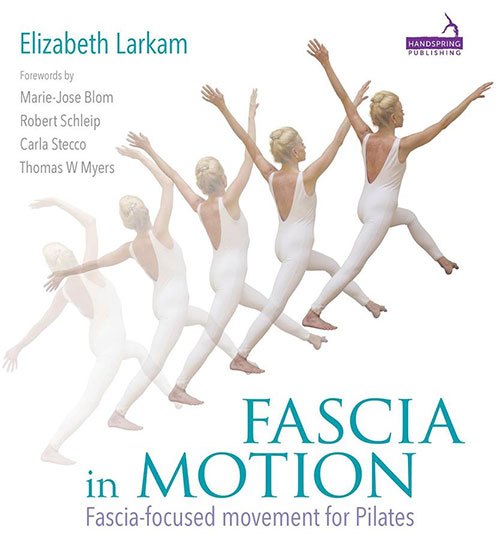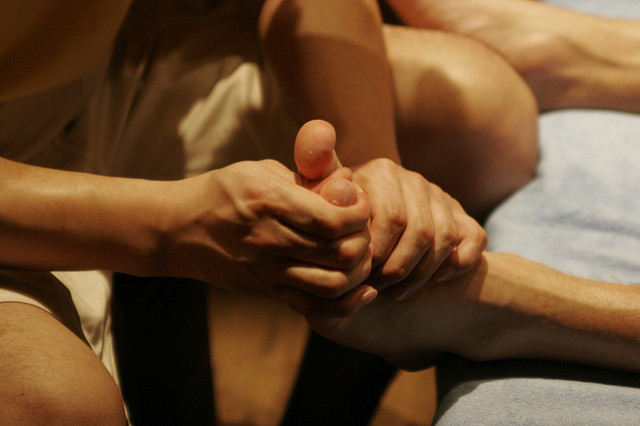Reframing Pilates concepts with new understanding of the structure and function of fascia
Reframing Pilates concepts with new understanding of the structure and function of fascia
by Elizabeth Larkam
The concept of lumbopelvic stability and the Pilates principle of balanced muscle development can be informed by an understanding of tensegrity, derived from “tension” and “integrity”. Earls and Myers (2010) suggested that we see the body as a single tensional webwork in which the bony struts “float”. The internal balance of tension and compression enables the body to have internal integrity, to hold its shape no matter what its spatial orientation. Any deformation will create strain that is evenly distributed throughout the body. Any injury rapidly becomes a strain distribution patterned into the whole body and requires a whole-body assessment and whole-body treatment. Pilates teachers are challenged to see the whole body in terms of tensegrity, in order to develop coherent movement program designs that address the seamless neuromyofascial system and develop motor control in support of functional movement.
Augmenting fascia-focused Pilates movement with fascial release for structural balance
Fascia-focused Pilates movement may be integrated with manual therapy or fascial release for structural balance. When one practitioner has acquired both skill sets, the client will be fortunate to receive fascia-focused training for motor control and movement education together with fascia release for structural balancing. If the practitioner has only one skill set, the client may seek two practitioners who can provide complementary sessions. Precise, whole-body movement is necessary for training the fascia but may not be sufficient to facilitate efficient movement. The body as a tensegrity system responds to trauma, contracting and retracting around all axes (Earls & Myers, 2010). When fascial release for structural balance opens the body in one dimension, it seems to respond in all dimensions.
The publication in 2012 of Fascia: the tensional network of the human body (Schleip et al., 2012) has inspired Pilates teachers to deepen their interdisciplinary study of the properties and function of fascia and apply these research findings to movement education. “While the bony insertions of the muscles actuate their mechanical actions, their fascial insertions could play a role in proprioception, contributing to the perception of movement” (Schleip et al., 2012).
The Pilates movement principles of Precision, Control, Centering, Flow and Whole Body Movement all correlate with the fascia-focused movement criteria of Proprioceptive Refinement and Kinesthetic Acuity.
Designing tactile cues to reinforce fascia-focused Pilates movement
The tactile cues modeled by Joseph Pilates in his films (Pilates, 1932–1945) indicate a strong touch, sometimes forcefully pushing the client into the intended position. Fascia-focused movement encourages a perceptual refinement of shear, gliding and tensioning motions in superficial fascial membranes (Müller & Schleip, 2011). This is inspired by the finding that the superficial fascia layers are more densely populated with mechanoreceptive nerve endings than the tissue situated more internally (Stecco & Stecco, 2014, cited in Schleip & Baker, 2015). Although this perceptual refinement is recommended in terms of movement, it seems reasonable to apply this discovery to shaping tactile cues for fascia-focused Pilates movement. By applying precise vectors at the depth of the superficial fascia layer, conveying myofascial continuity to a bony landmark or organ, a clear direction in space can be given.
For example, in Figure 1.9, in exercise No. 12, (in Fascia in Motion) the desired thoracic kyphosis has been lost. Accurate spinal organization may be reinforced by placing the pads of the four fingers of the teacher’s hand on the posterior spinous processes of the thoracic vertebrae between the scapulae. Instruct the client to bring the sternum up, in the direction of the vertebrae, bringing the spinous processes convex toward the ceiling. This cue activates the myofascial meridians of the arms, integrating them with all the myofascial meridians providing trunk support.
Summary
Although Pilates movement principles can be considered a subset of fascia-focused movement criteria, the design of fascia-focused Pilates programs requires new consideration of all elements of program design. Research on fascia suggests new criteria for exercise sequencing, new choices of movement tempo and rhythm and different language for verbal cueing, as well as clarification of the quality and direction of touch for tactile cues.
The work of the international community of Pilates teachers, who are evolving the field of fascia-focused Pilates movement, occurs in Pilates studios throughout the world. In these movement laboratories, Pilates teachers engage in interdisciplinary enquiry and collaborate with clients to facilitate functional, elegant movement in activities of daily living, athletics and performance.
This article is an excerpt of Fascia in Motion (copyright Handspring Publishing). Available at https://terrarosa.com.au/product/books/fascia-myofascial-release-books/fascia-in-motion/


